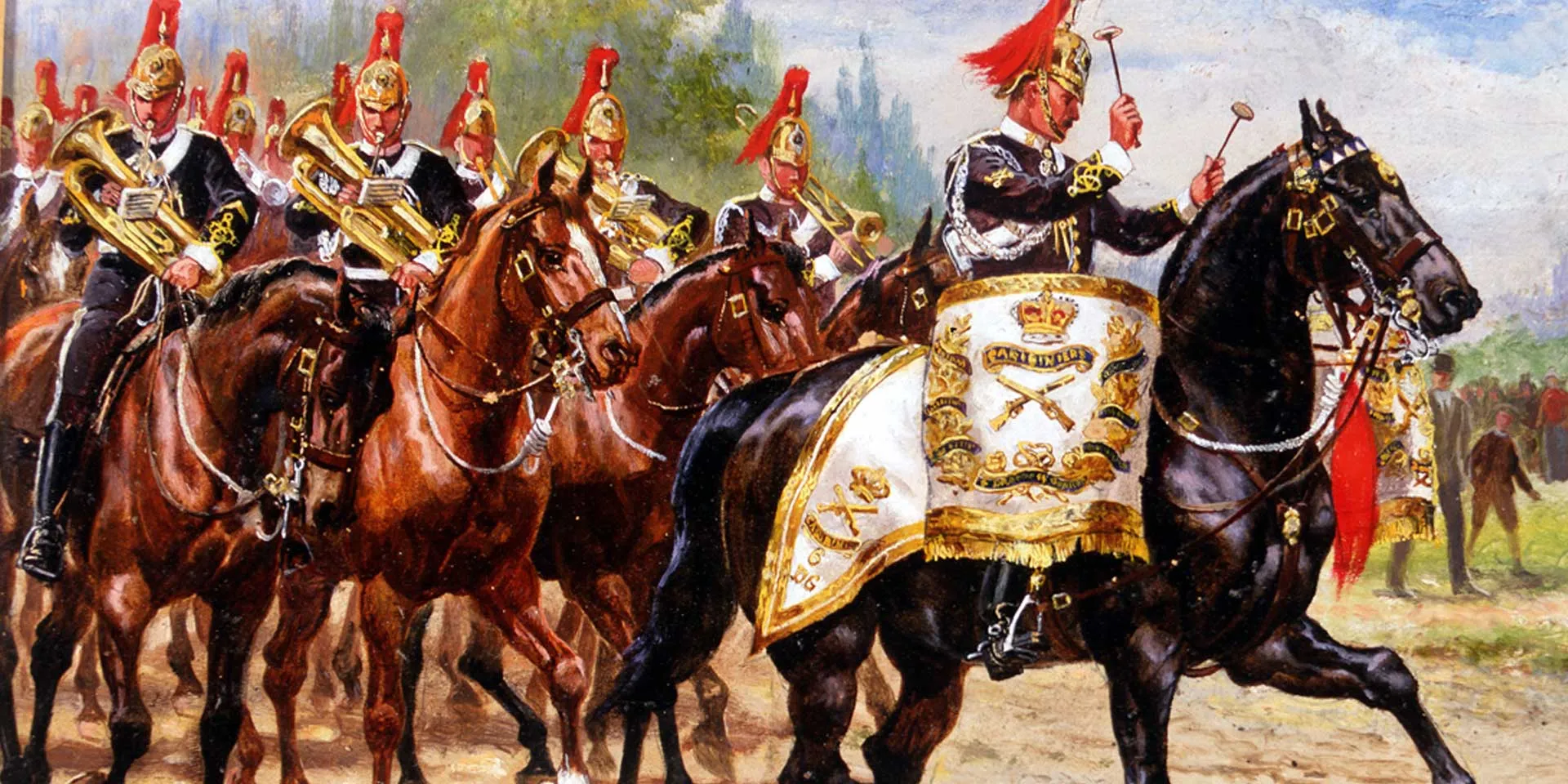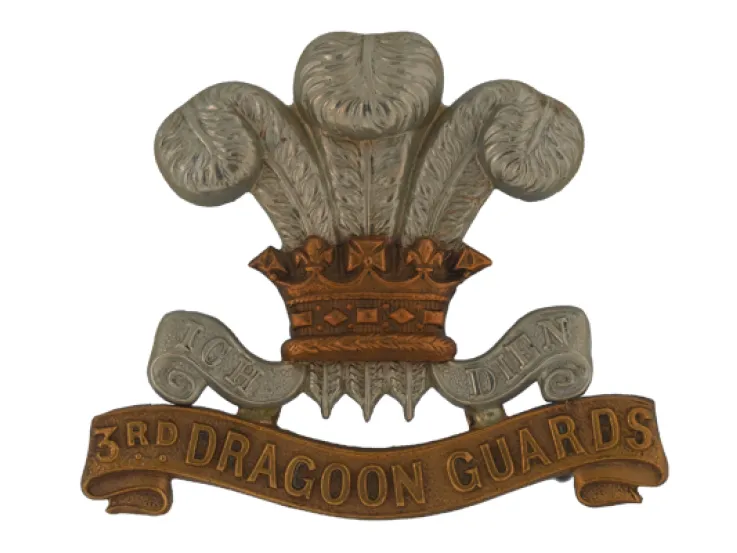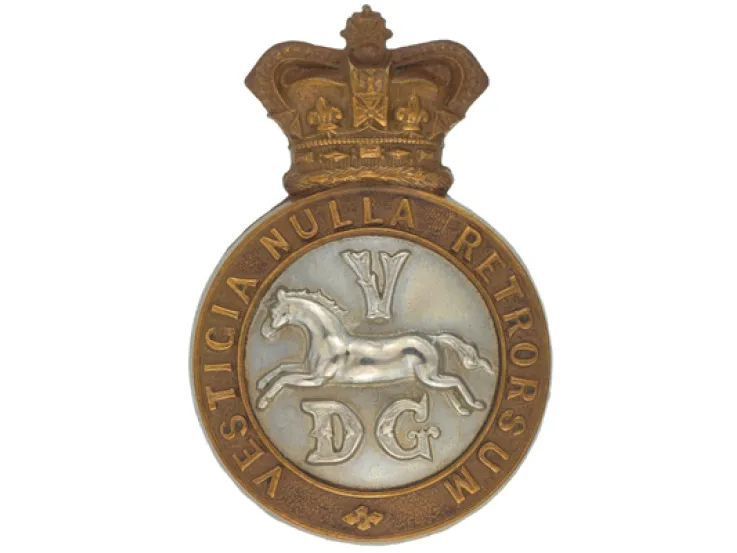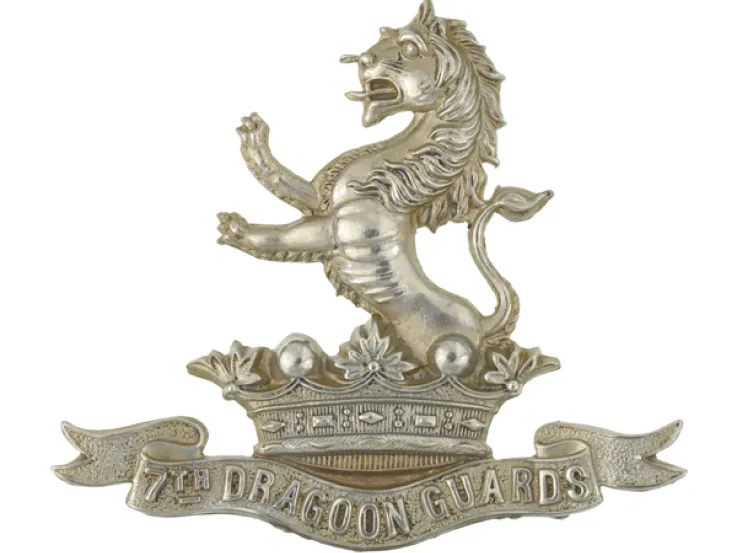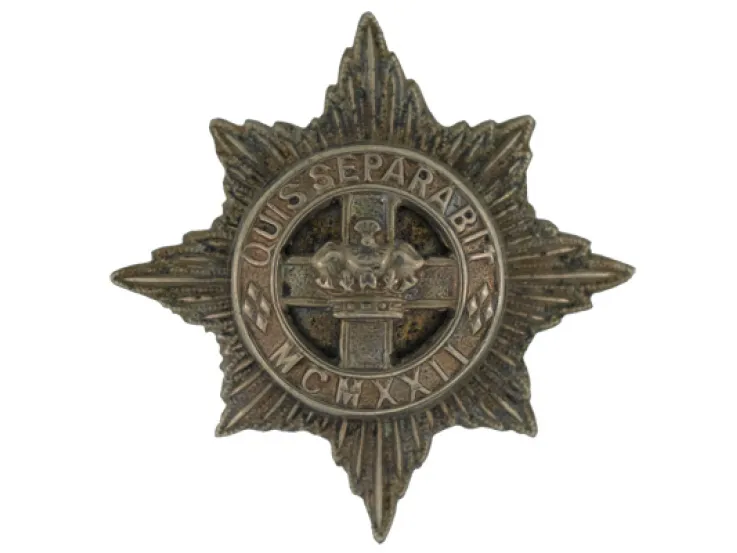Origins
In 1685, the recently crowned King James II faced a rebellion led by his nephew the Duke of Monmouth. He raised several regiments that year, including a unit of carabiniers - horsemen armed with carbines or shortened muskets - which he ranked as the 9th Horse.
The regiment's colonel, Lord Richard Lumley, then successfully petitioned for it to be named The Queen Dowager's Regiment of Horse after King Charles II's widow, Catherine of Braganza.
In 1688, James's son-in-law, William of Orange, made a successful bid for the throne. The regiment went over to him and fought for him in Ireland. It was renamed the King's Regiment of Carabineers in 1692 in honour of this service. That same year, it deployed to Flanders, fighting at Steenkirk (1692) and Namur (1695).
18th century
During the War of the Spanish Succession (1702-13), it fought at Blenheim (1704), Ramillies (1706), Oudenarde (1708) and Malplaquet (1709). The regiment then returned to Ireland in 1713 to take up garrison duties.
It arrived back in England to oppose James II's grandson Bonnie Prince Charlie in 1745. By then, almost all of the regiment's recruits were Irish Protestants, so it was moved to the Irish establishment in 1746 as the 3rd Irish Horse.
During the Seven Years War (1756-63), it fought in Germany, including the battles of Warburg (1760) and Vellingshausen (1761).
The regiment returned to the British establishment in 1788 as the 6th Regiment of Dragoon Guards. Then, in 1793, it was sent to fight the French in the Low Countries once again, gaining Willems (1794) as a battle honour.
19th century
The regiment was back in Ireland from 1796 to 1807, countering French landings and the Irish Rebellion (1798). From there, it sent a detachment of 400 officers and men to South America in 1806.
From 1807 to 1855, it alternated between garrison duties in England and Ireland. In 1826, it was renamed the 6th Regiment of Dragoon Guards (Carabineers). Then, in 1840, its title changed again to the 6th Dragoon Guards (Carabiniers).
In 1855, it was sent to the Crimean War (1854-56), although the only battle honour it gained there was Sevastopol. It then fought in the Delhi campaign during the Indian Mutiny (1857-59) in 1857, only returning to the British Isles in 1861.
It was back in India in the late 1870s to fight in the Second Afghan War (1878-80), taking part in the Khyber Pass operations.
The regiment returned to England, remaining there until the outbreak of the Boer War (1899-1902), during which it helped relieve Kimberley (1900) before joining the operations in the Orange Free State.
First World War
In August 1914, it deployed to France as part of the British Expeditionary Force. It served throughout the First World War (1914-18) on the Western Front, fighting in many engagements in both a mounted and infantry role. These included Mons (1914), the Marne (1914), the first two battles of Ypres (1914 and 1915), the Somme (1916), Arras (1917), Cambrai (1917) and Amiens (1918).
The regiment spent the post-war years stationed at the Curragh during the Irish War of Independence (1919-21), before returning home to Aldershot.
Legacy
In 1922, it was merged with the 3rd Dragoon Guards (Prince of Wales's) to form the 3rd/6th Dragoon Guards. But the carabiniers title lived on, after the new unit was renamed the 3rd Carabiniers (Prince of Wales's Dragoon Guards) in 1928.
Regimental museums
The National Army Museum works with a network of Regimental and Corps Museums across the UK to help preserve and share the history and traditions of the Army and its soldiers.
Discover more about the 6th Dragoon Guards (Carabiniers) by visiting the Royal Scots Dragoon Guards Museum at Edinburgh Castle and the Cheshire Military Museum in Chester.

